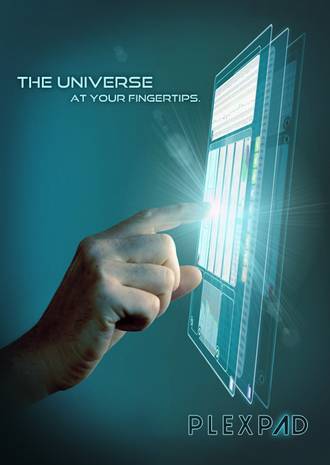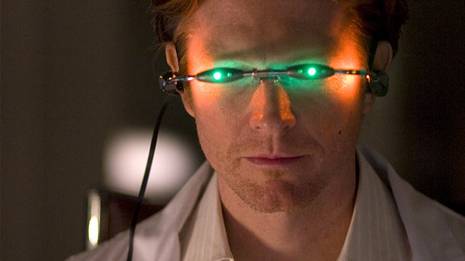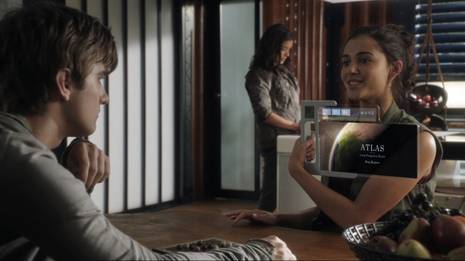The Window into the future
|
A Plexpad, also called a Plex, is a computing device built in 2149 described as the cheapest, most energy-efficient data access device on the planet.
|
|
The Caprica Holoband is a device that allows its user to access and participate in the V-World. A device created by Daniel Graystone, they are apparently easy to hack, thus allowing programmers to set up rooms of illicit activity, collectively called V-Clubs. Produced by Graystone Industries, sales and licensing of V-World "rooms" made up sixty percent of GI's revenue.
|
|
A Plexpad, also called a Plex, is a computing device built in 2149 described as the cheapest, most energy-efficient data access device on the planet. (source: 20th Century Fox Television)
|
The Window into the future | By Terence Ronson
Featured in the hit TV series – Terra Nova, is a see through tablet-esque device called 'Plex'. This hand held unit [not at all similar in design to an iPad] allows it's teenage user to do homework, listen to music and just about anything else this demographic yearns in order to stop their world from falling apart.
In fact, when the 'core' of the Plex blew in the recent episode, the owner 'Maddy' went into an almost bi-polar state because - "I have everything on my Plex!" she cries.
In the now defunct TV show Caprica – inhabitants would sport a VR device aptly named 'Holo-Band' – allowing the wearer to escape into another world – where through the help of an avatar, they exist in a Second-Life type environment. Allegedly, they have all the senses and emotions one would have in real life – but without the consequences of ones actions. Another visionary technology shown resembles a folding screen with e-ink.
Recent movies to include Mission Impossible, The Matrix, Avatar and TRON all exhibit one thing in common – SciFi futuristic gizmos. The super popular show CSI Miami employs a lot of holographic and head-up type displays to project images of corpses, maps and various other snippets of information adding to its excitement and state of wonderment by the viewing audience.
When I see these things I ask myself the question, how do these imagineersconjure up such innovation that makes us yearn for them – yet by contrast, the tech we use today (to include Hotels), although we think it's pretty advanced, resembles that of a steam engine.
Scientists busy themselves about how we would react if suddenly we're catapulted into the future by a trip in Dr. Who's Tardis to a place and time where such things exist. Would we salivate at the thought and accept them with open arms? Would the synapses inside our brain rapidly re-wire themselves to cope with this new demand on our grey cells, or would we be stumped and rebel – quickly seeking out an exit sign and the way back home?
In a few days time, the CES (Consumer Electronics Show) takes place in Las Vegas, and I for one will be there to see what wizardry is on display.
Who knows, HG Wells may even make an appearance and take me for a ride in her Time Machine… Please Please !
© Terence Ronson ISHC



